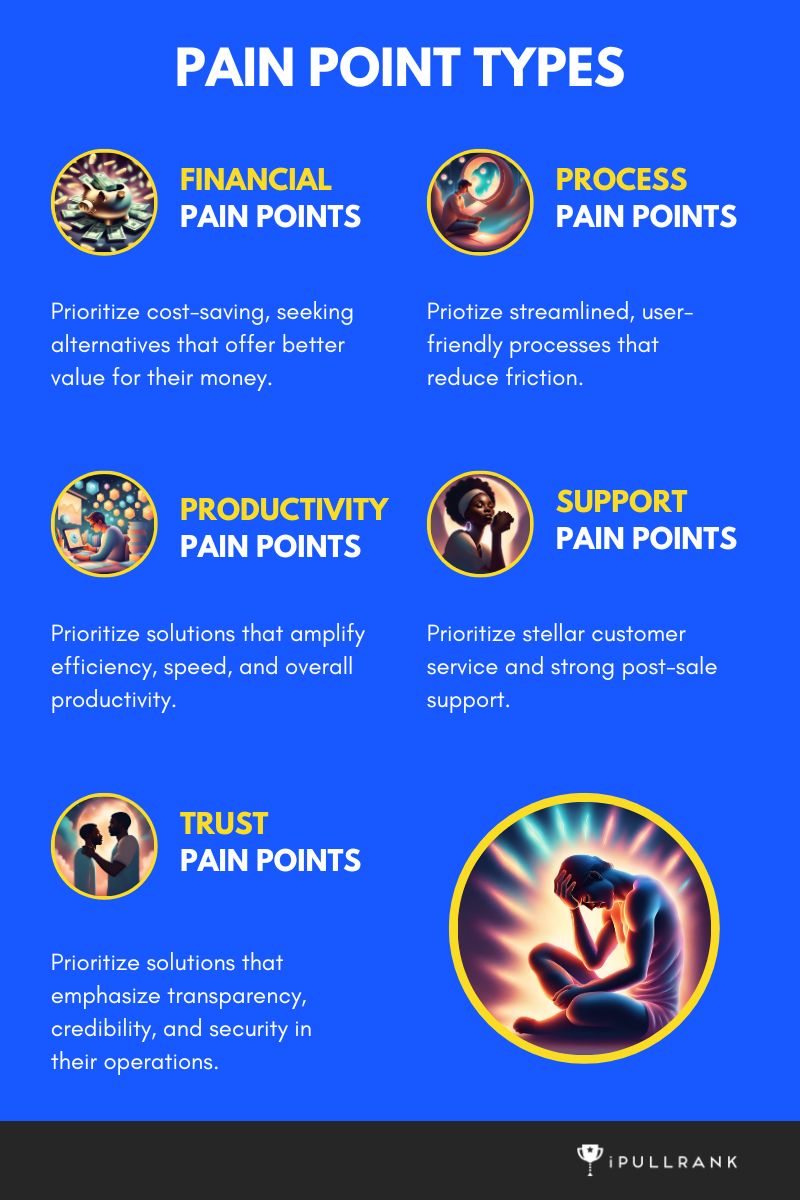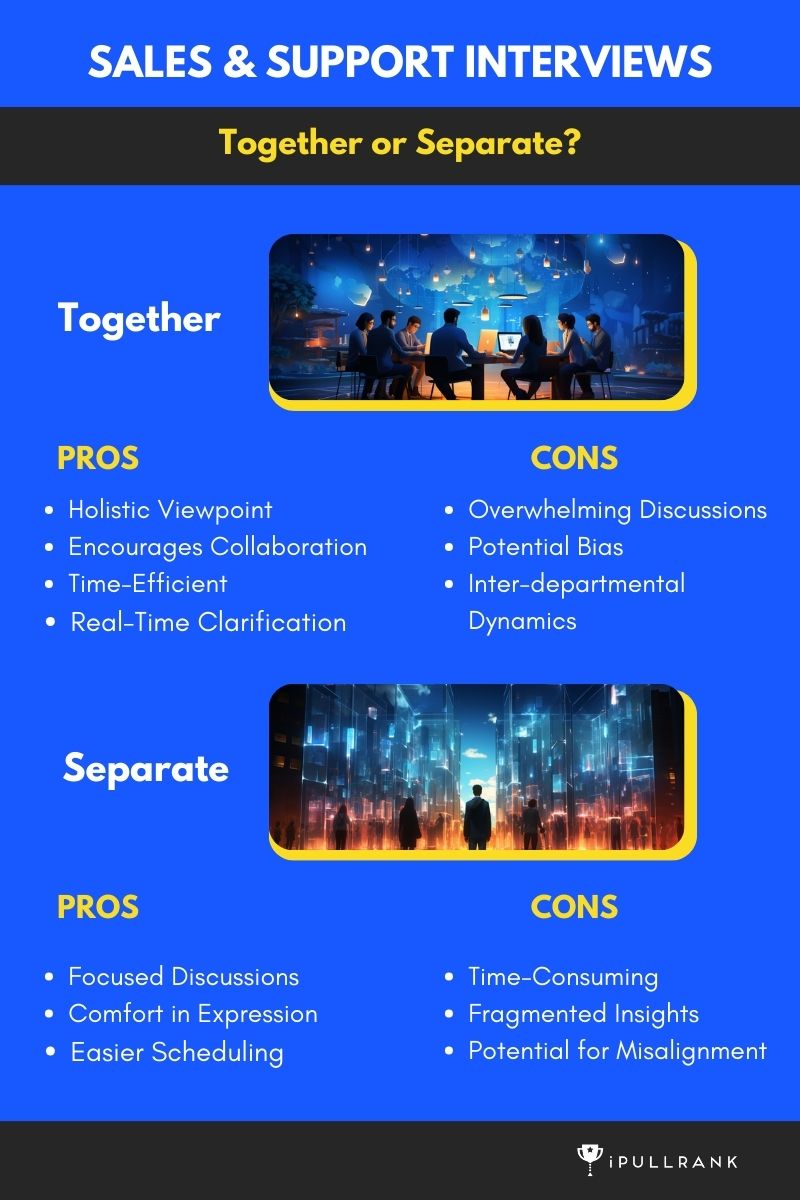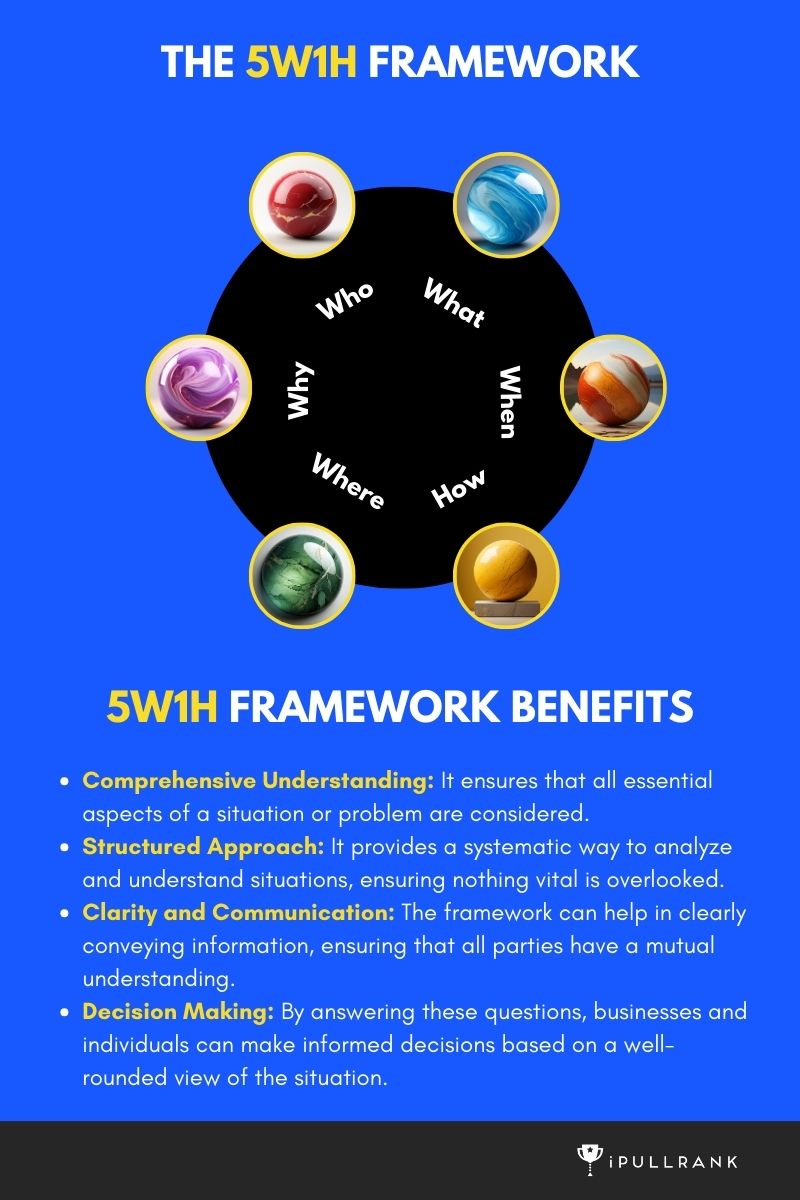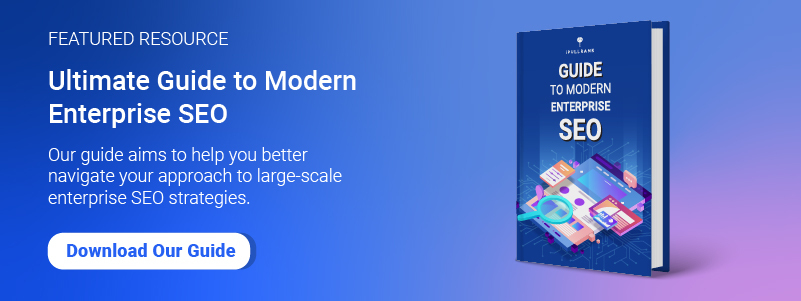Keyword research tools are a rabbit hole. We try to get clever. A tangential topic with massive search volume? We could dominate that result page and brainwash our audience into learning more about the organization. Sounds reasonable, right? Nope. It’s a waste of time and effort.
Don’t overthink SEO.
Your customers are telling you what content they want inadvertently. They’re a much better source of research than any SEO tool with questionable data.
Get closer to your customers. As an SEO, address the pain points in your content – the challenges, frustrations, and problems faced by current and potential customers. Your source of truth for keywords and authority.
Imagine this situation: my client, a logistics provider, needed my expertise, but I was running out of topic ideas for them. One day, the client asked if I’d like to sit in on a call that he had scheduled with the sales and customer service teams. They intended to discuss pain points with potential leads and current clients.
That call revealed customer insights that would shape my entire SEO strategy for the client going forward. Insights up and down the funnel were rifled off by employees. I asked myself why I never insisted on participating in these calls before. Never again.
You need to proactively attack these opportunities. Over the years, I’ve accumulated a range of tactics that tap into the knowledge and expertise of clients or the company’s sales and customer service teams. We identify pain points and develop content that answers real-life problems for their audience. When you collaborate with your front lines, you can create content that not only improves organic visibility but also resonates with the target audience on a deeper level.
And guess what? Those moments impact your website visitors. Those are the people that eventually become customers. That’s the long game of SEO.
The Psychology Behind Customer Pain Points
It doesn’t matter if you’re a Fortune 500 eCommerce company, the most widely circulated online journal, or the biggest bank in the US. There’s a reason that our fingertips reach for Google (especially when our know-it-all friend can’t help us out).
But before you schedule a Friday brainstorming session with sales and support, let’s break down the essence of the pain points and SEO tasks that intertwine with their solution.
Imagine you have a pair of shoes that hurt your feet every time you wear them. That hurt you feel? That’s similar to a “pain point” for a customer. A customer pain point is a problem or issue that people have with a product, service, or company. It’s something that makes them say, “I wish this was better.”
The definition of a pain point is something that represents the specific needs, desires, or concerns of potential customers that drive them to seek solutions. Like search intent, we can drill down into specific types of pain points that resonate with your audience.

1. Financial Pain Points: These arise when potential customers in the market perceive that they might be overspending or not maximizing their budget on existing solutions.
- Market Context: A segment of the market is increasingly prioritizing cost-saving, seeking alternatives that offer better value for their money.
2. Process Pain Points: These emerge when potential customers identify complexities or inefficiencies in prevailing systems or processes.
- Market Context: There’s a noticeable demand in the market for more streamlined, user-friendly processes that reduce friction and enhance user experience.
3. Productivity Pain Points: These concern potential customers’ belief that prevalent solutions aren’t optimizing their time or efforts.
- Market Context: The market indicates a shift towards solutions that amplify efficiency, speed, and overall productivity.
4. Support Pain Points: The market indicates that potential customers are hesitant to engage due to perceived lackluster post-purchase support from existing solutions.
- Market Context: There’s a growing emphasis on stellar customer service, with potential customers gravitating towards offerings with strong post-sale support.
5. Trust Pain Points: Arising when potential customers harbor reservations about the authenticity, security, or reliability of dominant market solutions.
- Market Context: There’s a palpable demand for solutions that emphasize transparency, credibility, and security in their operations.
Identify and address these pain points in your content to position your brand as a valuable resource. Increase user engagement and conversions. Now you have ample opportunities to show expertise in your field which will help with E-E-A-T.
Beyond content-related pain points, the user experience of your website likely has friction points that frustrate customers. The data doesn’t always clearly explain the reasons for poor performance. But if customers complain about that specific spot on the website, we have a better starting point for technical investigation and solutions.
Collaboration with Sales and Customer Service Teams
Why don’t SEOs talk with Sales and Support more? Typically, there’s a misalignment of priorities and incentives. They don’t understand how the marketing and SEO teams can support them with great content that solves the annoying pain points their customers and prospects face.
But it’s your job to help them understand that collaboration between SEOs and the sales and customer service teams can bring several benefits to a company.
Sales and customer service teams are on the front lines of customer interactions, making them a goldmine of insights. When involved in the content creation process, SEOs can gain valuable information about the customer pain points and challenges they resolve every day. Worst case scenario, you can be their therapist. Allow them to vent. It’s like pain point inception.
Meeting with both the sales and customer support teams can provide invaluable insights into customer and prospect pain points. Let’s evaluate the pros and cons of joint meetings versus individual sessions:

Meeting Sales and Customer Support Teams Together:
Pros:
- Holistic Viewpoint: Combining insights from the sales process with post-purchase feedback offers a comprehensive view of the customer journey.
- Encourages Collaboration: This approach fosters a unified company approach, ensuring all departments are aligned in understanding and addressing pain points.
- Time-Efficient: Gathering everyone at once can save time, streamlining the process of collecting feedback.
- Real-Time Clarification: If there’s any disagreement or misunderstanding about a particular point, it can be immediately clarified with input from both sides.
Cons:
- Overwhelming Discussions: With representatives from two different departments, the discussion might become lengthy and go off-track.
- Potential Bias: One team might dominate the conversation, leading to a skewed perspective.
- Inter-departmental Dynamics: There might be pre-existing tensions or disagreements between teams, which could influence the discussion’s flow.
Meeting Each Team Individually:
Pros:
- Focused Discussions: Meeting one team at a time allows for a deeper dive into their specific experiences and insights.
- Comfort in Expression: Team members might feel more open to sharing in the absence of another department, especially if inter-departmental dynamics are a concern.
- Easier Scheduling: Coordinating with one team at a time might be logistically simpler.
Cons:
- Time-Consuming: Meeting teams separately could elongate the feedback-gathering process.
- Fragmented Insights: There’s a risk of getting disjointed perspectives, which might require extra effort to merge into a coherent understanding later.
- Potential for Misalignment: Without joint discussions, teams might develop different understandings or priorities regarding customer pain points.
Whether to meet together or separately depends on your organization’s dynamics and objectives. If the aim is to get a comprehensive, unified understanding quickly, a joint meeting might be preferable. However, if the goal is to have in-depth, focused discussions and the company has the time for it, individual meetings could be the better choice. It’s essential to evaluate the specific context and needs of your organization when making this decision.
Collaborating with sales and customer service teams not only enhances content relevance but also fosters a sense of unity and shared purpose within the organization.
Gathering Insights from the Teams
The key to a successful insight-gathering mission: don’t waste everyone’s time. Come prepared. Even better, send over your questions in advance for the teams to prepare.
Some of the best questions to bring to these meetings are simple questions revolving around the 5W framework.

The “5 W” framework refers to a set of fundamental questions used for information gathering, problem-solving, and understanding contexts in depth. This framework is commonly attributed to journalism, research, and investigative processes, but it’s versatile and can be applied in many domains.
The 5 W Framework:
- Who: This pertains to the individuals or entities involved.
- Example: Who are the main competitors they use or have used?
- What: This relates to the action or subject at hand.
- Example: What are the biggest objections you’re receiving from potential customers? Or what type of businesses typically reach out?
- Where: This involves the location or setting.
- Example: Where do clients find the biggest issue with our processes?
- When: This concerns the timing or chronological aspect.
- Example: When do customers typically reach out with questions about the product?
- Why: This is often the most critical question, delving into reasons, motivations, or the purpose.
- Example: Why do customers ask for a refund? Or why don’t prospects choose us?
In some variations of the framework, a sixth question, “How,” is added to address the method or process, making it the “5W1H” framework.
Example: How soon do they need *product/service*?
Benefits of the 5 W Framework:
- Comprehensive Understanding: It ensures that all essential aspects of a situation or problem are considered.
- Structured Approach: It provides a systematic way to analyze and understand situations, ensuring nothing vital is overlooked.
- Clarity and Communication: The framework can help in clearly conveying information, ensuring that all parties have a mutual understanding.
- Decision Making: By answering these questions, businesses and individuals can make informed decisions based on a well-rounded view of the situation.
Overall, the “5 W” framework offers a simple yet powerful method to gather information, understand contexts, and make informed decisions across various fields and disciplines.
Alternatively, bring questions from the Jobs To Be Done framework.

The “Job To Be Done” (JTBD) framework is a concept that focuses on understanding the specific “job” a customer “hires” a product or service to do. In other words, it’s about comprehending the underlying problem or need that prompts a person to buy and use something.
Core Principle: People don’t merely buy products; they “hire” them to fulfill a particular task or solve a specific problem.
Key Aspects of the JTBD Framework:
Functional Jobs: These are the primary tasks or problems that customers want to address. For instance, a person might hire a drill because their job-to-be-done is “making a hole.”
Sales Team Examples:
- What features or capabilities do prospects most frequently inquire about?
- When discussing their needs, what tasks or objectives do they mention most often?
Support Team Examples:
- Which functionalities do customers ask for assistance with most frequently?
- Are there common tasks customers struggle to accomplish with our product/service?
Emotional Jobs: Beyond just functionality, there are also emotional tasks or desires a customer might want to fulfill. Using the drill example, a customer might also want to feel capable or self-reliant.
Sales Team Examples:
- How do prospects envision our product or service improving their life or business?
- What emotions or sentiments do they express when considering a purchase?
Support Team Examples:
- When customers give feedback, what emotions do they frequently convey?
- Are there moments they’ve shared where the product made them feel particularly positive or negative?
Circumstances: The specific situations or contexts in which the job arises play a crucial role. Two people might hire a product for the same job but in different circumstances, leading them to prioritize different features or benefits.
Sales Team Examples:
- In what specific scenarios or contexts do prospects believe our product/service will be most useful?
- Are there particular events or triggers that lead them to seek our solution?
Support Team Examples:
- Do customers mention when or where they most commonly use our product/service?
- Are there recurring external factors that influence how they interact with what we offer?
By posing these questions, SEOs can gather invaluable insights into the underlying “jobs” that prospects and customers are “hiring” their product or service for. These insights can inform more resonant SEO strategies, campaigns, and messages.
Benefits of the JTBD Framework:
- Customer-Centric Innovation: By focusing on the job, businesses can innovate based on real customer needs rather than just adding features.
- Competitive Differentiation: By understanding the job thoroughly, a company can differentiate itself by better meeting the customer’s true needs.
- Clearer Marketing Messaging: With JTBD insights, marketing can communicate in terms of real benefits and solutions, rather than just features.
In essence, the JTBD framework provides a lens to look beyond just what a product is and delve deep into why people use it. It’s a powerful tool for businesses to stay aligned with genuine customer needs and drive meaningful innovation.
There are a lot of questions that can be asked and there can be a wealth of knowledge to be had from these meetings. The frequency of the meetings will depend on how large your business is as more customer interaction will lead to more potential data to work with.
Benefits of Collaborating with the Sales and Customer Service Teams
So what happens once you can collect all of this helpful info about your business? Massive benefits from getting together with these internal teams, including:
Enhanced understanding of our customers’ pain points. As SEOs, we typically perform extensive keyword research and analysis to identify the pain points and search intent of customers based on the SERPs and what we see competitors doing.
The sales and customer service teams provide deeper insights into the specific pain points that our customers encounter during their interactions with the company. It’s real. Not speculated based on uncertain data. With this knowledge, we can create targeted content and optimize the website to directly address the issues that our customers and users of our site are experiencing.
Improved content optimization. When we work closely with the sales and customer service teams, they can uncover valuable information about customers’ frequently asked questions, concerns, and challenges. With this knowledge we can create helpful blog posts, FAQs, and product descriptions, to provide comprehensive answers and solutions. Google likes that.
Sales and support give you a prioritized roadmap for optimized content. The company attracts more qualified traffic and generates higher-quality leads. SEO shouldn’t always be about getting the most traffic but the right traffic.
Targeted keyword optimization. If we’re not immersed in the vocabulary of our customers, we’re likely to target the wrong keywords. Sales and customer service teams have direct interactions with customers. They know the language and terminology they use. Identify the specific words and phrases customers use when searching for products or solutions. This knowledge can guide keyword research and help optimize website content to align with customers’ language, improve search rankings and increase organic visibility.
Align marketing and sales efforts. Effective collaboration between SEOs and the sales team primes the lead generation and customer acquisition pipeline (your sales team will love that). Believe it or not, we can provide valuable keyword insights that the sales team can leverage in their outreach and follow-up communications with prospective customers. SEOs understand the buyer’s journey in search. Share the knowledge. This alignment helps create a consistent customer experience throughout the sales funnel, from initial search queries to the final purchase decision.
Improved customer satisfaction and loyalty. By addressing customer pain points identified through collaboration, the company can provide more relevant and helpful information, products, and services. Imagine how happy your support team will be if they have a comprehensive blog post that solves that majoy pain point they deal with over and over. Improved customer satisfaction, increased trust in the brand, and enhanced customer loyalty. Happy customers are more likely to engage with the company, refer others, and become repeat customers, positively impacting the company’s bottom line.
Data-driven decision making. SEOs, sales teams, and customer service teams all have access to valuable data related to customer behavior, preferences, and pain points. By combining their expertise and data insights, these teams can collectively make more informed decisions regarding website optimization, content creation, and overall marketing strategy. This data-driven approach helps allocate resources effectively, prioritize efforts, and optimize the customer journey for maximum impact.
We’re all on the same team. Or at least we should be. Collaboration between SEOs, sales, and customer service teams creates a synergy that enables the company to better understand and address customer pain points. When you work together and tap into each team’s expertise, you can produce content that improves online visibility. You more effectively attract the right audience and ultimately drive business growth.
Continuous Collaboration and Improvement
This isn’t a one-off job. It’s an ongoing process. Continue the positive outcomes of these efforts with recurring meetings. Establish a feedback loop and continuously gather new pain points, insights, and updates from the sales and customer service teams on how updates and optimizations are being received. As consumer behavior changes or the market evolves, you and the front line are better prepared to help customers and adapt accordingly.
Iterating and optimizing content based on performance data and customer feedback is also critical. SEOs can analyze the performance metrics, identify areas for improvement, and make necessary adjustments to enhance the effectiveness of the content in addressing pain points. This iterative approach ensures that the content remains relevant, engaging, and valuable to the target audience over time.
Content for SEO and Everyone Else
Leveraging the knowledge and expertise of sales and customer service teams can be a game-changer for SEOs in addressing pain points. By collaborating with sales and customer service teams we can gain valuable insights into the challenges, objections, and frustrations of potential customers. This collaboration allows us to develop content that not only attracts organic traffic but also resonates with the audience on a deeper level, providing the answers, solutions, and support they seek.
The benefits of this collaborative approach are multi-fold. SEOs can improve organic visibility, enhance user satisfaction, increase engagement, and ultimately drive conversions. By aligning SEO efforts with the pain points of the target audience, businesses can establish themselves as trusted authorities in their industry, build strong relationships with customers, and ultimately achieve long-term success.
By embracing the power of pain points and working hand-in-hand with sales and customer service teams, SEOs can create content that truly addresses the needs of the audience, positioning their brand as a valuable resource and driving tangible business results. Start leveraging the insights from your sales and customer service teams today and watch your SEO content flourish.








